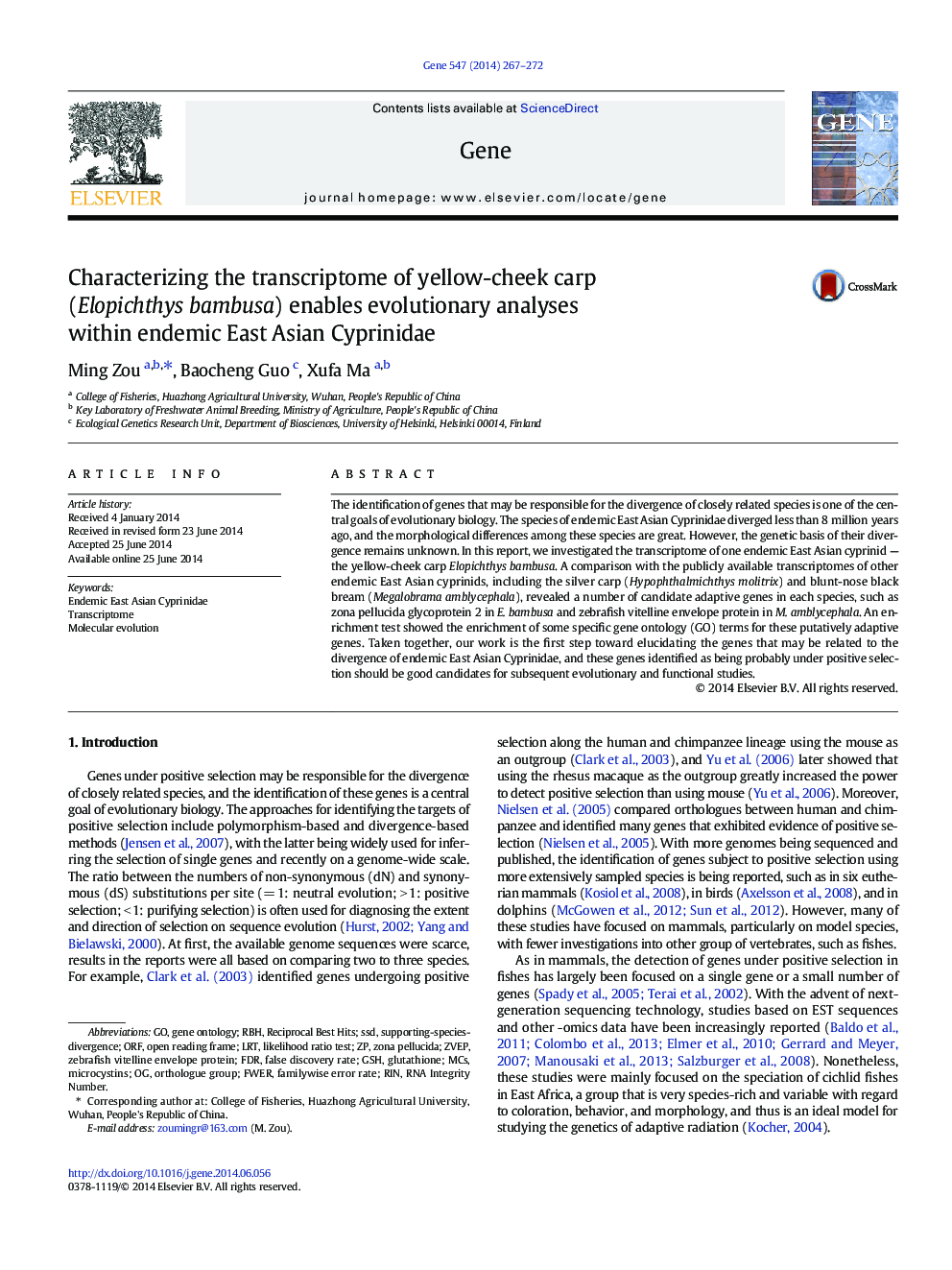| کد مقاله | کد نشریه | سال انتشار | مقاله انگلیسی | نسخه تمام متن |
|---|---|---|---|---|
| 2816234 | 1159921 | 2014 | 6 صفحه PDF | دانلود رایگان |

• We sequence the transcriptome of Elopichthys bambusa.
• We perform evolutionary analyses within endemic East Asian Cyprinidae.
• Some genes are probably under positive selection within endemic East Asian Cyprinid.
The identification of genes that may be responsible for the divergence of closely related species is one of the central goals of evolutionary biology. The species of endemic East Asian Cyprinidae diverged less than 8 million years ago, and the morphological differences among these species are great. However, the genetic basis of their divergence remains unknown. In this report, we investigated the transcriptome of one endemic East Asian cyprinid — the yellow-cheek carp Elopichthys bambusa. A comparison with the publicly available transcriptomes of other endemic East Asian cyprinids, including the silver carp (Hypophthalmichthys molitrix) and blunt-nose black bream (Megalobrama amblycephala), revealed a number of candidate adaptive genes in each species, such as zona pellucida glycoprotein 2 in E. bambusa and zebrafish vitelline envelope protein in M. amblycephala. An enrichment test showed the enrichment of some specific gene ontology (GO) terms for these putatively adaptive genes. Taken together, our work is the first step toward elucidating the genes that may be related to the divergence of endemic East Asian Cyprinidae, and these genes identified as being probably under positive selection should be good candidates for subsequent evolutionary and functional studies.
Journal: Gene - Volume 547, Issue 2, 1 September 2014, Pages 267–272